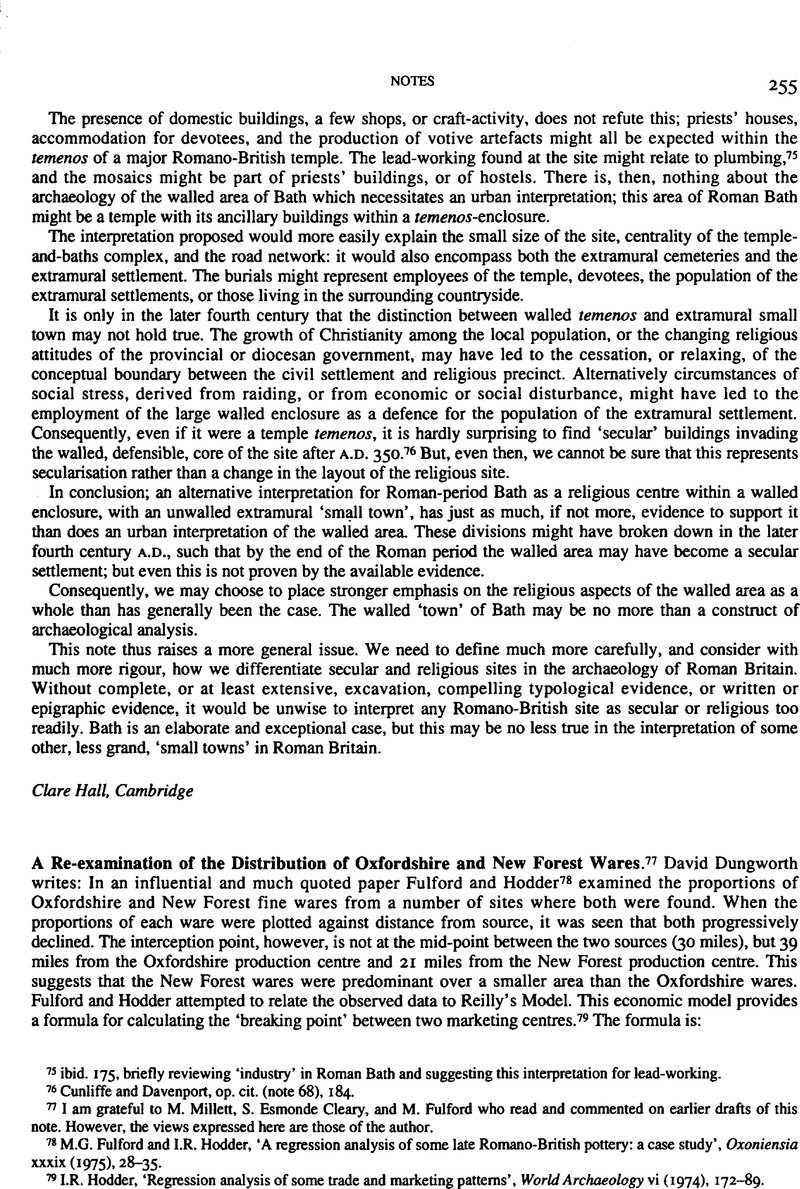No CrossRef data available.
Article contents
A Re-examination of the Distribution of Oxfordshire and New Forest Wares
Published online by Cambridge University Press: 09 November 2011
Abstract

- Type
- Notes
- Information
- Copyright
- Copyright © David Dungworth 1993. Exclusive Licence to Publish: The Society for the Promotion of Roman Studies
References
77 I am grateful to M. Millett, S. Esmonde Cleary, and M. Fulford who read and commented on earlier drafts of this note. However, the views expressed here are those of the author.
78 Fulford, M.G. and Hodder, I.R., ‘A regression analysis of some late Romano-British pottery: a case study’, Oxoniensia xxxix (1975). 28–35.Google Scholar
79 Hodder, I. R., ‘Regression analysis of some trade and marketing patterns’, World Archaeology vi (1974), 172–89.CrossRefGoogle Scholar
80 op. cit. (note 78), 31.
81 Compare distribution maps showing the extent of the potteries, e.g. Fulford, M.G., New Forest Roman Pottery, BAR 17 (1975), fig. 1Google Scholar, and Young, C.J., The Roman Pottery Industry of the Oxfordshire Region, BAR 43 (1977), fig. 2.Google Scholar
82 Nicholson, P. and Patterson, H., ‘Pottery making in Upper Egypt: an ethnoarchaeological study’, World Archaeology xvii (1987), 222–39.Google Scholar
83 D.P.S. Peacock, Pottery in the Roman World: an Ethnoarchaeological Approach (1982), 42–3.
84 P.M. Rice, Pottery Analysis: A Sourcebook (1987), 184.
85 Fulford, op. cit. (note 81), 12.
86 A.H.M. Jones, The Later Roman Empire (1964), 860.
87 Young, op. cit. (note 81), Appendix 1.
88 Fulford, op. cit. (note 81), Appendix 1.
89 The result has been calculated in miles for comparison with the original data. In metric units the distance would be 24.3 km.


